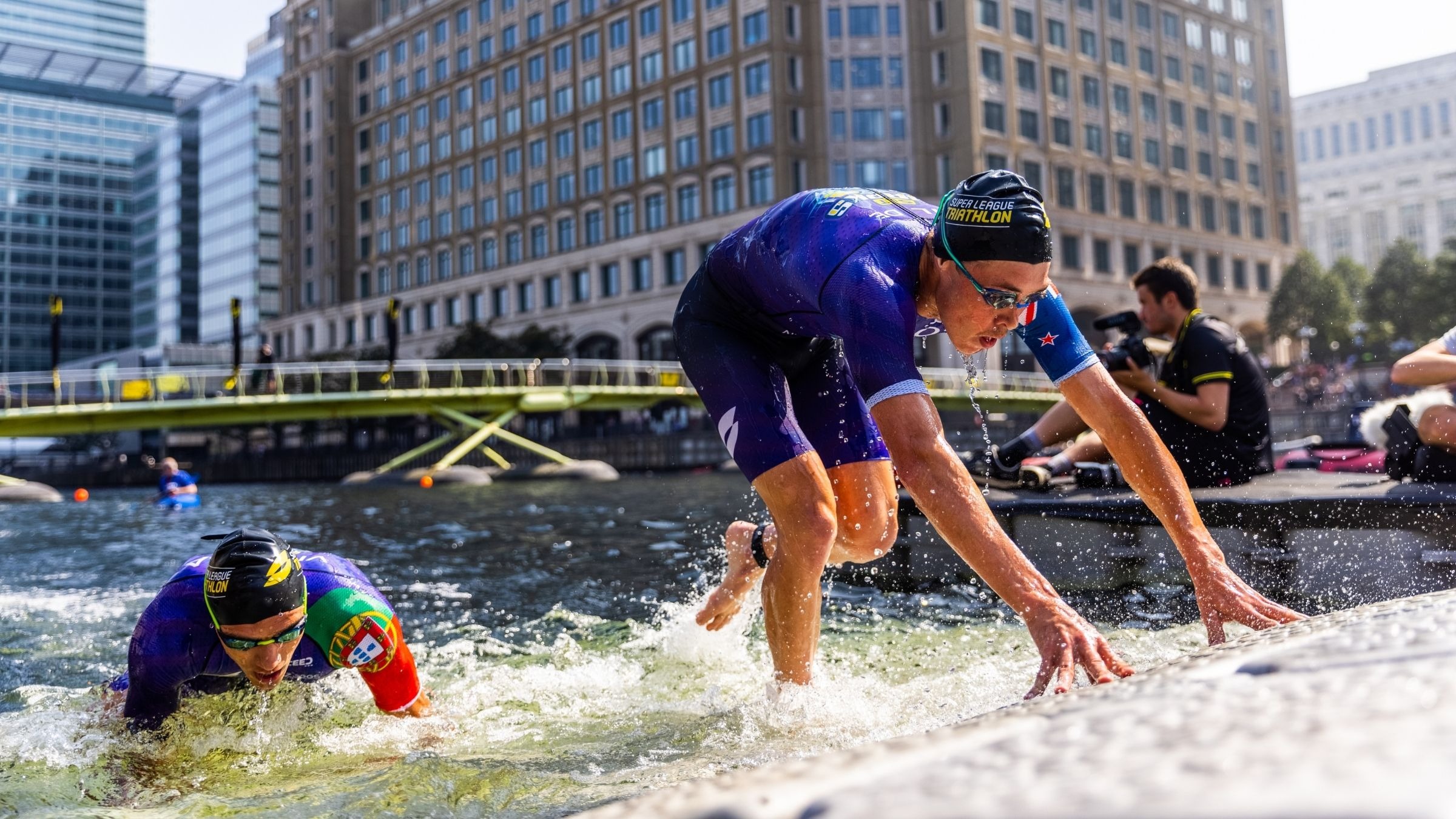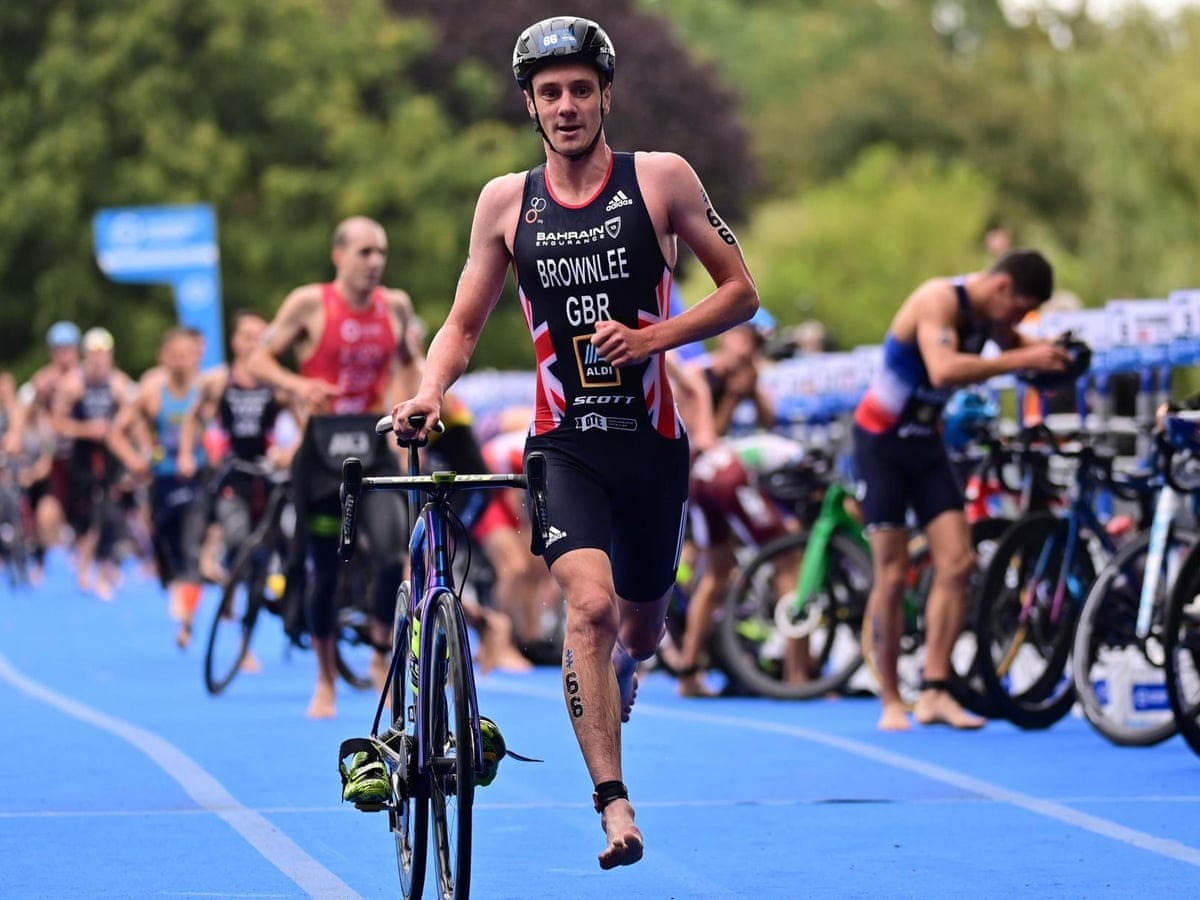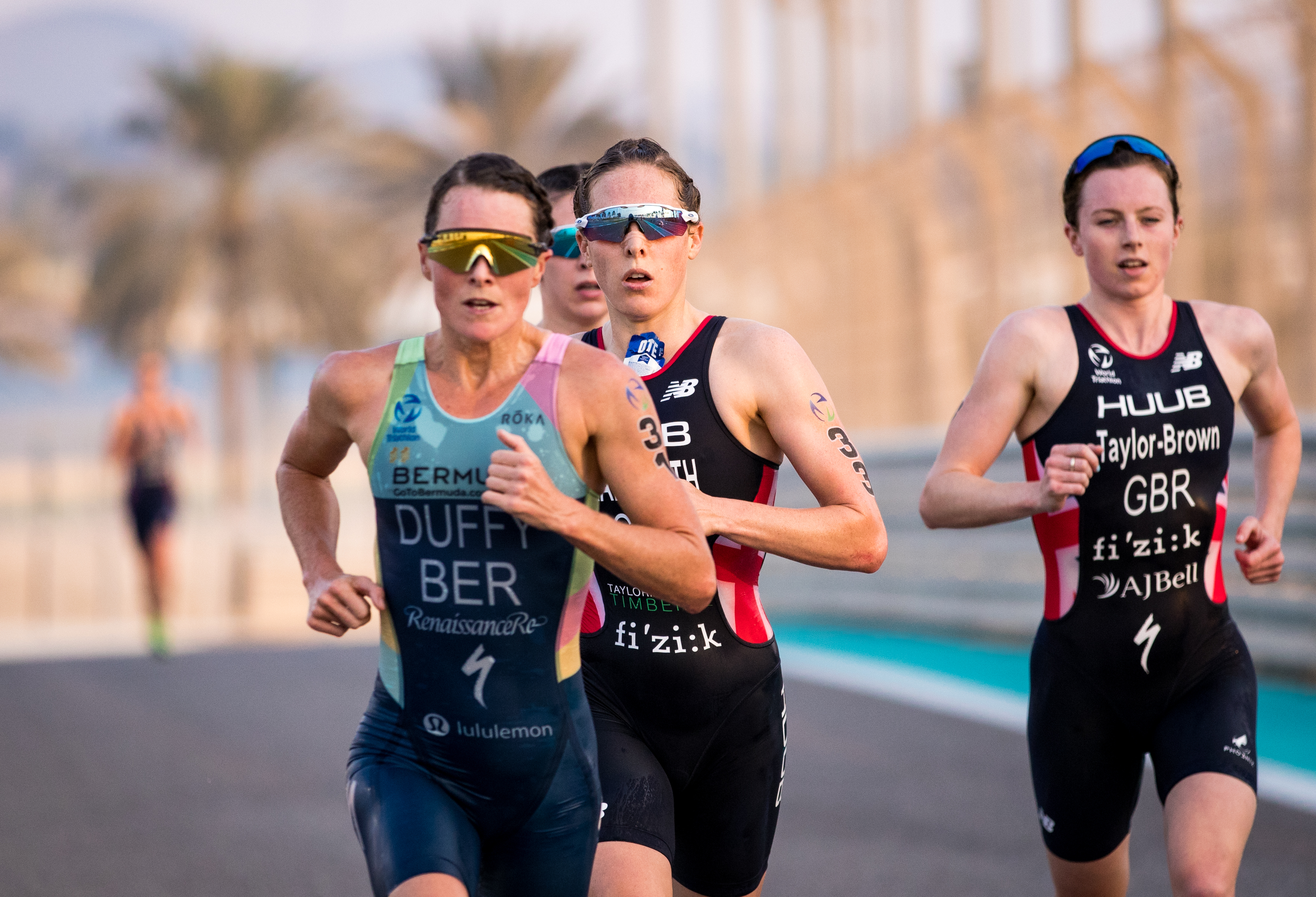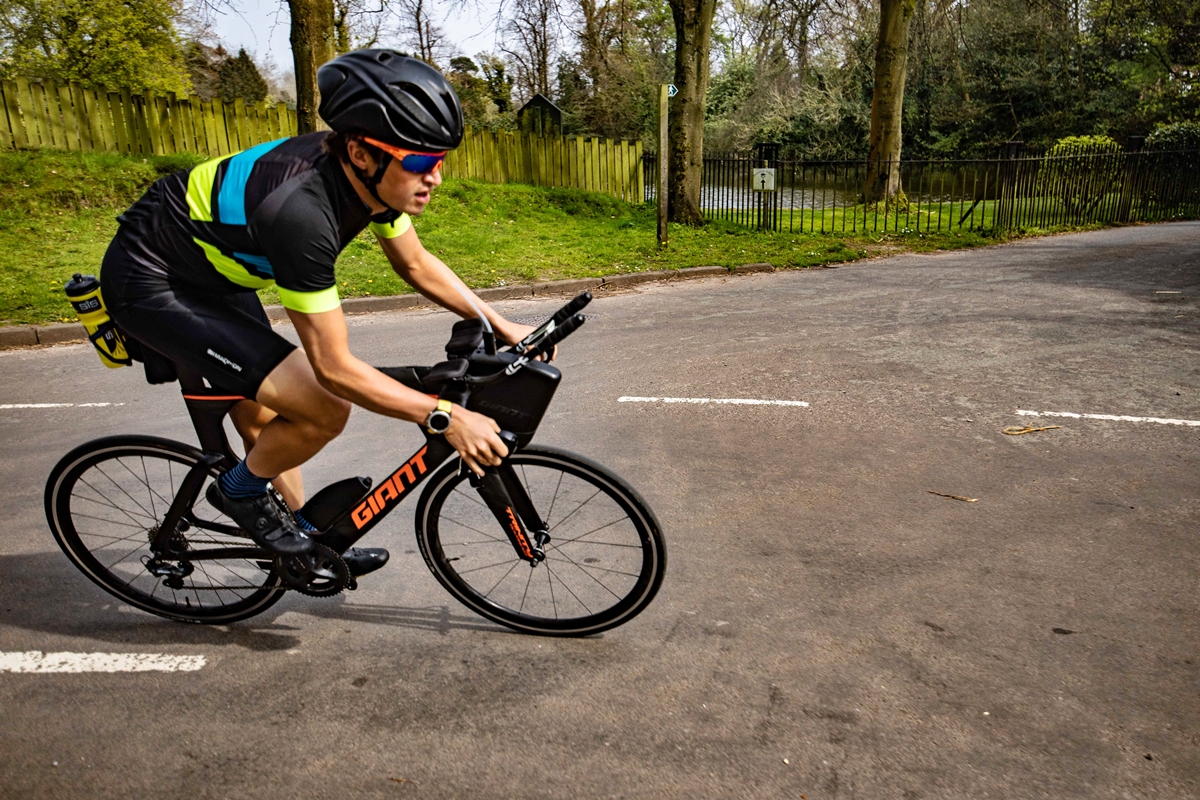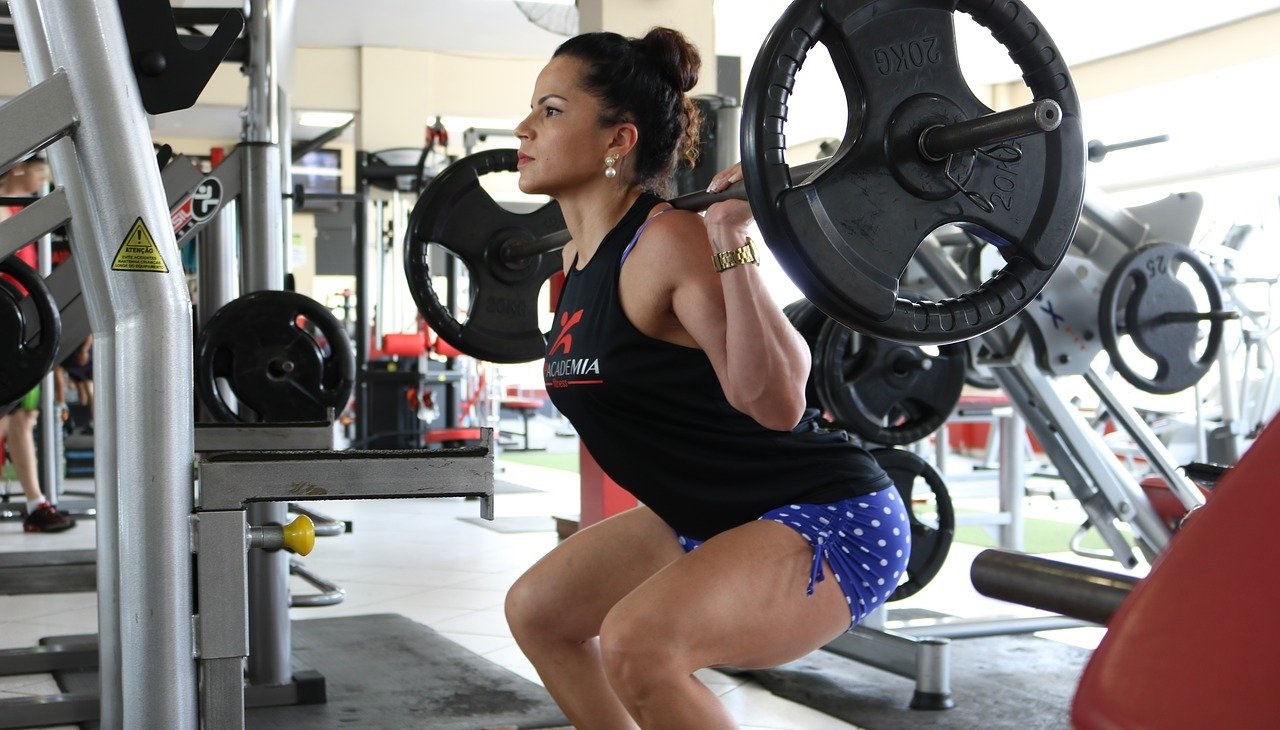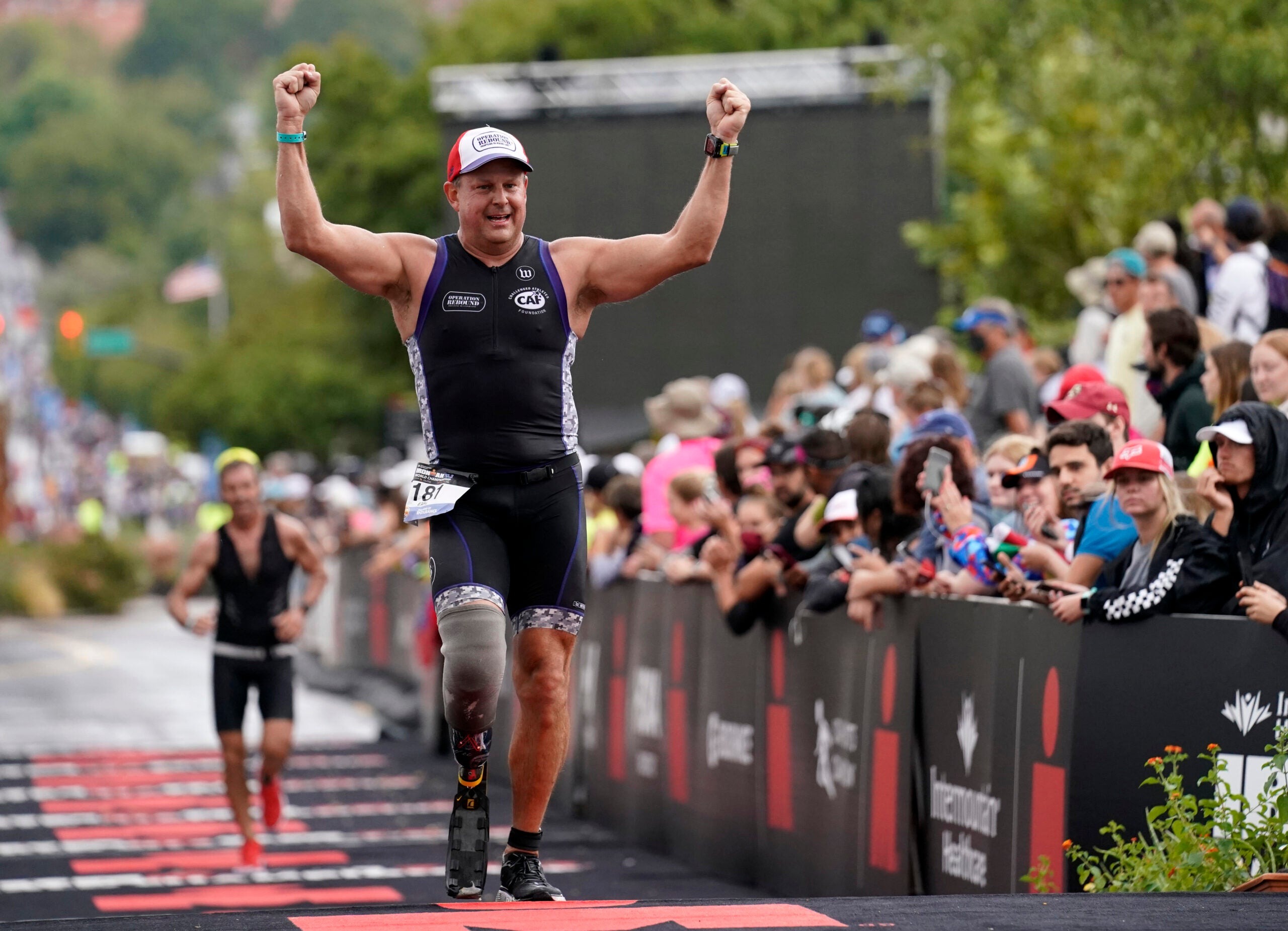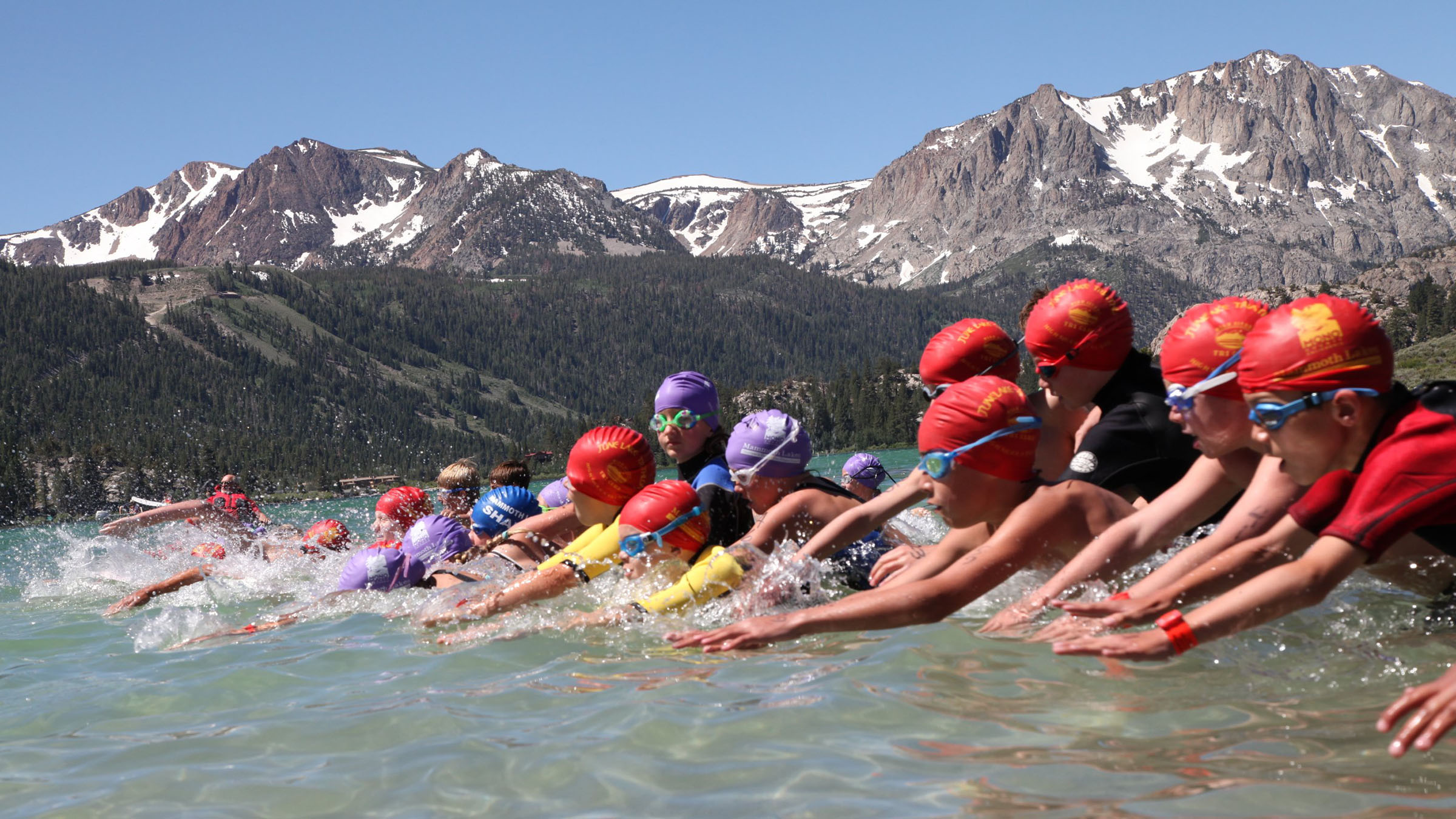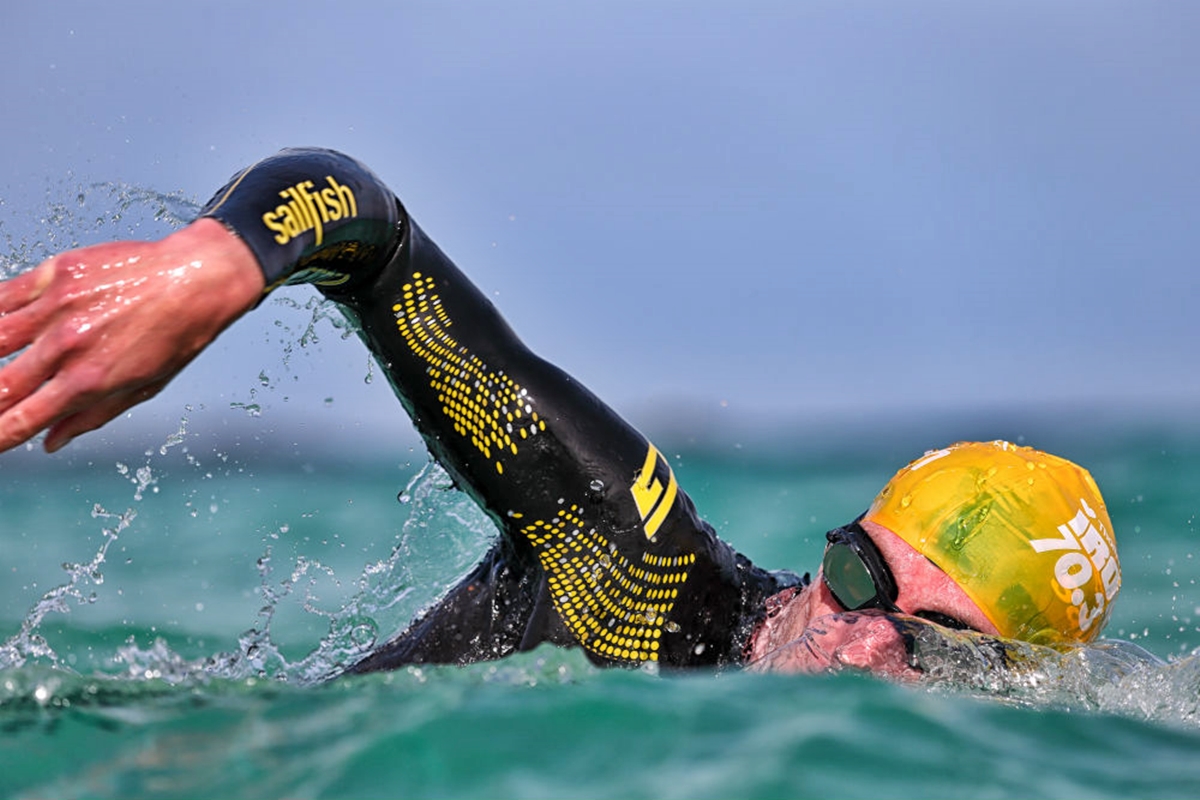

Featured
How Far Is A Swim In A Triathlon
Modified: January 2, 2024
Discover how far a swim in a triathlon can be and what it takes to conquer this challenging feat. Get featured tips and insights from seasoned athletes.
Introduction
Welcome to the world of triathlons! If you’re new to the sport, you may have already heard about the various components that make up this exciting and challenging endurance event. While running and cycling are often at the forefront of people’s minds when they think of triathlons, the swim leg is an essential and integral part of every triathlon. In this article, we will explore the swim leg of a triathlon and discuss the distances typically involved.
For those unfamiliar with the triathlon, it is a multi-discipline event that tests athletes’ endurance across three different activities: swimming, cycling, and running. Competitors start with the swim leg, transition to the cycling leg, and finish with the running leg. Triathlons come in various distances, from the sprint distance with shorter distances for each leg, to the Olympic distance, half Ironman, and full Ironman distances, which are more grueling and demanding.
The swim leg is often the first leg of a triathlon and sets the tone for the rest of the race. It requires athletes to navigate through open water or swimming pools, sometimes battling waves or strong currents. The swimming portion not only tests an athlete’s physical strength and endurance but also their ability to overcome the mental challenges of swimming in a crowded field and staying on course. Swim training is crucial for triathletes to build the necessary stamina, technique, and confidence in the water.
Now that we understand the significance of the swim leg in a triathlon, let’s delve into the standard distances typically involved in this part of the race. Understanding these distances is essential for training and preparing for a triathlon, as well as setting goals and expectations for the swim leg. Factors such as location, event type, and athlete’s fitness level can influence the swim distance, and we will explore these factors in further detail as we continue.
What is a Triathlon?
A triathlon is an endurance sport that combines three different disciplines: swimming, cycling, and running. It is a test of both physical and mental strength, requiring athletes to push their limits and conquer various challenges. Triathlons can range from short, sprint distances to ultra-distance events, such as Ironman races.
The origins of the triathlon can be traced back to the 1970s when a group of athletes from San Diego, California, started combining the three disciplines in informal races. The sport gained popularity, and the first official triathlon was held in Mission Bay, San Diego, in 1974. Since then, triathlons have grown exponentially in popularity, with participants of all ages and fitness levels taking on the challenge.
The swim leg is usually the first component of a triathlon, followed by the cycling leg and then the run. Competitors start together and transition between each leg in designated areas. The transition areas are where athletes change their gear and prepare for the next stage of the race. Transitions play a crucial role in triathlons, as time spent in transition areas can greatly impact an athlete’s overall race time.
Triathlons come in various distances, catering to athletes with different abilities and goals. The sprint distance is the shortest, typically consisting of a 750-meter swim, a 20-kilometer bike ride, and a 5-kilometer run. The Olympic distance follows, with a 1.5-kilometer swim, a 40-kilometer bike ride, and a 10-kilometer run. These distances are popular amongst beginners and seasoned triathletes looking for a shorter, faster race.
For those seeking a greater challenge, there are longer distances available. The half Ironman distance consists of a 1.9-kilometer swim, a 90-kilometer bike ride, and a 21.1-kilometer run. Finally, the full Ironman distance is the ultimate test for triathletes, consisting of a 3.8-kilometer swim, a 180-kilometer bike ride, and a full marathon run of 42.2 kilometers.
Triathlons can take place in various settings, ranging from open water swims in lakes, rivers, or oceans, to pool swims in controlled environments. The cycling leg typically takes place on roads or dedicated cycling courses, while the run leg is usually on pavement or trails.
Participating in a triathlon requires dedicated training in all three disciplines, as well as improving transition skills, nutrition, and mental preparation. The triathlon community is supportive and inclusive, with events taking place all around the world, from local races to international championships.
Now that we have a better understanding of what a triathlon entails, let’s focus on the swim leg, its distances, and the factors that can affect the swim distance in a triathlon.
The Swim Leg: An Essential Component
The swim leg is an essential component of any triathlon. It not only serves as the starting point of the race but also sets the tone for the rest of the event. Competitors must navigate through open water or swimming pools, showcasing their swimming skills while contending with various factors such as waves, currents, and other athletes. The swim leg is not just about physical endurance; it also tests an athlete’s mental toughness, adaptability, and ability to stay on course.
The swim leg can present unique challenges that differentiate it from the other legs of a triathlon. Unlike cycling and running, swimming requires athletes to propel themselves through the water, using proper technique and body positioning. This means that swimming skills and efficiency play a crucial role in shaping an athlete’s overall performance.
In the swim leg, athletes are typically grouped together and start simultaneously, creating a crowded and competitive field. This tight space can lead to contact with other swimmers, unintentional collisions, or even getting tangled up in someone else’s arms or legs. Athletes must be prepared for these situations and remain focused and calm, especially during the initial chaos of the swim leg.
Depending on the race distance and location, the swim leg can take place in open water, such as lakes, rivers, or oceans, or it can be held in a controlled environment like a swimming pool. Open water swims introduce additional challenges, such as navigating currents, dealing with waves, and sighting to stay on course. These factors can significantly affect a competitor’s swim time and overall performance.
Another crucial aspect of the swim leg is the transition from swimming to cycling. The transition area, also known as T1, is where athletes change their gear, such as swapping their wetsuit for cycling attire and putting on their helmet. Effective transitions can shave off valuable time and give competitors an advantage as they move on to the next leg of the race. Athletes must practice transitioning from the swim to bike in order to minimize time spent in the transition area.
Overall, the swim leg is a critical component of a triathlon, not just for its physical demands but also for the mental and strategic elements it brings. It requires swimmers to not only be proficient in the water but also adaptable, agile, and resilient. The swim leg sets the stage for the rest of the race, and a strong start can provide triathletes with the momentum and confidence they need to conquer the cycling and running legs that follow.
Now that we understand the importance of the swim leg, let’s delve into the standard distances typically associated with this segment of a triathlon, as well as the factors that can influence the swim distance in different events.
The Standard Swim Distance
When it comes to triathlons, there is a standard swim distance that is commonly used across various race types. This standard distance forms the foundation for many triathlon events and sets the benchmark for athletes to gauge their swim performance.
The most common standard swim distance in triathlons is 1.5 kilometers or approximately 0.93 miles. This distance is typically used in Olympic distance triathlons, which consist of a 1.5-kilometer swim, a 40-kilometer bike ride, and a 10-kilometer run. The Olympic distance is a favorite among amateur and professional triathletes alike, as it provides a challenging yet achievable goal.
Why is the 1.5-kilometer distance considered the standard for the swim leg in triathlons? The answer lies in finding a balance between challenging athletes and ensuring the swim remains accessible for participants of varying abilities. A 1.5-kilometer swim is long enough to separate strong swimmers from weaker ones but still manageable for individuals who may not have extensive swimming backgrounds.
For beginner triathletes, the 1.5-kilometer distance might seem daunting at first. However, with proper training and preparation, it is a distance that can be conquered by anyone willing to put in the effort. The swim leg sets the tone for the entire race, so it’s important to establish a solid foundation in swimming to build confidence and improve overall performance.
It’s worth noting that the standard swim distance can vary slightly depending on factors such as race location and terrain. For example, in some triathlons held in open water bodies like lakes or oceans, the swim course might be adjusted due to logistical constraints or to provide a more challenging experience. However, the variations in these cases are generally minimal, and the standard swim distance of 1.5 kilometers remains prevalent.
As with any aspect of triathlon, training plays a crucial role in preparing for the swim leg. Swimmers should focus on building their endurance, refining their stroke technique, and familiarizing themselves with open water conditions whenever possible. Regular swim sessions, both in the pool and open water, combined with proper technique drills and interval training, can significantly improve overall swim performance.
While the 1.5-kilometer swim distance is commonly accepted as the standard in triathlons, it’s important to remember that triathlon events offer a wide range of distances to accommodate varying fitness levels and goals. Whether an athlete aspires to take on shorter sprint distances or tackle the longer challenges of a half or full Ironman, the swim leg remains an integral part of the race, demanding focus, preparation, and determination.
Now that we’ve explored the standard swim distance in triathlons, let’s delve into the factors that can influence the swim distance in different types of triathlon events.
Factors Affecting the Swim Distance
While the standard swim distance in triathlons is typically 1.5 kilometers, there are several factors that can influence the actual swim distance in different types of triathlon events. These factors can vary from race to race, making each event unique and presenting its own set of challenges for triathletes.
One of the primary factors affecting the swim distance is the specific race location. Triathlons can take place in a variety of settings, including oceans, lakes, rivers, or swimming pools. The available space and conditions in each location play a role in determining the swim distance. For example, if a race is held in a lake with limited space, the swim course may need to be adjusted to accommodate the number of participants, resulting in a shorter or longer swim distance.
Another factor influencing swim distance is the event type. Triathlons come in different distances, ranging from sprint to Olympic to Ironman. Each distance has its own predefined standards for the swim leg. For instance, a sprint triathlon typically has a shorter swim distance compared to an Olympic or Ironman triathlon. The duration and intensity of the entire race also influence the swim distance, as longer events may require a more substantial swim portion.
The level of experience and skill of the participating athletes is another factor that can affect the swim distance. In races aimed at beginner triathletes, the swim distances may be shorter to accommodate those who are relatively new to swimming or still developing their endurance. On the other hand, for highly competitive races where the majority of athletes are experienced swimmers, the swim distance may be longer to challenge and differentiate the top performers.
External factors, such as weather conditions, can also impact the swim distance. Strong currents, high waves, or turbulent waters may necessitate adjustments to the swim course, potentially resulting in a shorter or longer distance. Race organizers prioritize participant safety and may modify the swim leg to ensure competitors are not put at risk due to adverse weather conditions.
In addition to these factors, the goals and objectives of the race organizers can influence the swim distance. Some races may aim to attract a wide range of participants, including beginners and recreational triathletes. In such cases, the swim distance may be adjusted to create a more inclusive and accessible event. Other races may cater to seasoned athletes looking for a tougher challenge, which could result in longer swim distances.
It’s important for triathletes to research and understand the specific factors that can influence the swim distance in the races they plan to participate in. This information can help them prepare appropriately and set realistic goals for their swim training. By knowing the swim distance in advance, athletes can tailor their training plans, allocate their time and effort effectively, and build the necessary strength, endurance, and technique required for success.
Now that we’ve explored the various factors that can impact the swim distance in different types of triathlon events, let’s move on to discussing the specific swim distances associated with various triathlon distances.
Different Swim Distances in Triathlons
Triathlons come in various distances, each with its own swim leg distance. These different swim distances cater to athletes with varying fitness levels, goals, and experience. Let’s explore the swim distances associated with different triathlon distances.
1. Sprint Distance: The sprint triathlon is the shortest distance considered in the world of triathlons. The swim leg for a sprint triathlon typically ranges from 400 to 750 meters (0.25 to 0.47 miles). This swim distance is designed to be more accessible for beginners or those looking for a shorter, faster race. It allows participants to get a taste of triathlon without the daunting aspect of a longer swim.
2. Olympic Distance: The Olympic triathlon, also known as the standard distance, is one of the most popular race distances among triathletes. The swim leg for an Olympic triathlon is usually 1.5 kilometers (0.93 miles). This distance requires athletes to have a solid foundational swim fitness and technique, making it a good balance for those seeking a challenging but achievable race.
3. Half Ironman: The half Ironman, also known as the 70.3 distance, is a step up from the Olympic distance in terms of both distance and endurance. The swim leg for a half Ironman triathlon is typically 1.9 kilometers (1.2 miles). This longer swim distance adds an element of endurance to the race and requires athletes to have a higher level of swim fitness.
4. Full Ironman: Considered the pinnacle of triathlon distances, the full Ironman is the ultimate test of an athlete’s mental and physical strength. The swim leg for a full Ironman triathlon is 3.8 kilometers (2.4 miles). The longer swim distance in a full Ironman demands a high level of swim fitness, technique, and endurance. Swimming almost 2.5 miles in open water can be a daunting task, making it necessary for triathletes to spend significant time training in the water to prepare for this portion of the race.
It’s important to note that these distances are typical, but variation can occur depending on race locations and logistics. Some races may offer slightly shorter or longer swim distances within these distance categories. Additionally, there are other race distances that fall between the sprint and Olympic distances, such as super sprint and intermediate distances, with corresponding swim distances that vary based on race organizers’ preferences.
When choosing a triathlon event, it’s essential to consider your own swimming abilities and comfort level. Assessing your swim capabilities and setting realistic goals based on the specific swim distance of your chosen race will help you train effectively and perform to your best ability.
Now that we’ve looked at different swim distances in various triathlon distances, let’s move on to the next section, which focuses on training tips for the swim leg in a triathlon.
Training for the Swim Leg
Training for the swim leg of a triathlon is essential to build the necessary swim fitness, technique, and confidence in the water. Whether you’re a beginner or a seasoned triathlete, dedicating time and effort to swim training will help you improve your performance and overall race experience. Here are some training tips to prepare for the swim leg:
1. Set Clear Goals: Define your swim goals and establish a training plan that aligns with those objectives. Whether your goal is to complete the swim leg comfortably or improve your overall swim time, having a clear target will help you stay focused and motivated throughout your training.
2. Consistency is Key: Regular swim sessions are crucial to improving your swim fitness and technique. Aim to swim at least two to three times per week, gradually increasing the duration and intensity of your workouts as you progress. Consistency in training will help you build endurance and improve your swim speed.
3. Work on Technique: Focus on refining your swim technique to become more efficient in the water. Consider working with a swim coach who can provide feedback and help you make adjustments to your stroke, body alignment, and breathing. Incorporate drills into your training sessions to target specific areas of your technique that need improvement.
4. Open Water Practice: If your triathlon includes an open water swim, it’s crucial to get comfortable swimming in a natural environment. Find local open water opportunities, such as lakes or beaches, to practice swimming in conditions similar to those you’ll encounter on race day. This will help you adapt to factors like waves, currents, and sighting.
5. Practice Transitions: Efficient transitions between swim and bike are crucial for a successful triathlon. Incorporate transitions into your training by practicing getting in and out of your wetsuit quickly, putting on your cycling gear, and mounting your bike. Include simulated brick workouts where you combine swimming with cycling to adapt to the sensation of transitioning from swim to bike.
6. Train with Others: Find a swim group or join a triathlon training program to swim with fellow triathletes. Swimming with others can simulate the crowded conditions of a race and help you develop the mental fortitude needed to navigate through a pack of competitors. Additionally, training with others can provide motivation and accountability.
7. Incorporate Interval Training: To improve your swim speed and build endurance, include interval training in your swim workouts. Alternate between periods of high-intensity effort and recovery to push your limits and challenge yourself. Interval training helps simulate the race intensity and prepares your body for sustained swimming effort.
8. Focus on Mental Preparation: The swim leg of a triathlon can be mentally challenging, especially in crowded or open water conditions. Practice visualization techniques and mental exercises to build confidence and manage any anxieties you may have. Being mentally prepared will help you stay calm and focused on race day.
Remember to listen to your body and gradually increase the intensity of your swim training to minimize the risk of injury. Incorporate rest and recovery days into your training schedule to allow your body to adapt and become stronger. With consistent training, dedication, and a positive mindset, you’ll be well-prepared for the swim leg of your next triathlon.
Now that we’ve covered swim training tips, let’s explore some additional tips for a successful swim leg in a triathlon.
Tips for a Successful Swim in a Triathlon
The swim leg of a triathlon can be both exhilarating and challenging. To ensure a successful swim that sets you up for a strong race, it’s important to consider the following tips:
1. Get Familiar with the Course: Prior to the race, study the swim course map and become familiar with the layout. Take note of any buoy placements, turns, or landmarks that can help you navigate the course accurately. Visualizing the swim course beforehand will give you confidence and help reduce any race-day jitters.
2. Warm-Up Properly: Arrive at the race early to allow time for a thorough warm-up swim. Warming up not only prepares your body for the swim but also helps acclimate to the water temperature and conditions. Start with some light stretching, followed by a few minutes of easy swimming to get your muscles primed and ready for the race ahead.
3. Position Yourself Wisely: During the swim start, position yourself based on your swim speed and experience. If you’re a stronger swimmer, position yourself towards the front or side of the pack to avoid congestion. If you’re less confident, position yourself slightly behind or to the side to find clearer water and reduce the chances of getting caught up in the chaos.
4. Pace Yourself: It’s easy to get caught up in the excitement and adrenaline at the start of the swim leg. However, it’s crucial to swim within your abilities and avoid going out too fast. Settle into a comfortable pace that allows you to maintain a steady rhythm throughout the swim. Conserving energy early on will benefit you for the remainder of the race.
5. Sighting and Course Navigation: When swimming in open water, sighting is crucial to stay on course and swim efficiently. Lift your head to look ahead and spot the next buoy or marker, aligning it with a distinct object on the shore or in the distance. Practice sighting during your training sessions to help develop good technique and maintain a straight swimming line.
6. Deal with Crowding: The swim leg can be crowded, with athletes swimming in close proximity. Remain calm and focused, maintaining your own space and avoiding unnecessary clashes with other swimmers. If you find yourself boxed in or bumped, stay composed and adjust your position to find clearer water.
7. Breathe and Stay Relaxed: Proper breathing technique is essential for a smooth swim. Focus on exhaling fully into the water and inhaling deeply when turning your head to take a breath. Manage your breathing rhythm to maintain a relaxed state and avoid breathlessness or hyperventilation. Relax your body and ensure your stroke remains fluid and efficient.
8. Practice Transitions: Efficient transitions can make a significant difference in your overall race time. Practice your transition from swim to bike during training, ensuring a smooth and quick change of gear. Remove your wetsuit efficiently and have your cycling gear ready and organized to minimize time spent in the transition area.
9. Stay Mentally Strong: The swim leg can be mentally demanding, especially if you encounter challenging conditions or moments of doubt. Prepare mentally with visualization techniques, positive self-talk, and focusing on your race plan. Stay present and focused on your own performance, rather than comparing yourself to others.
10. Learn from Each Swim Leg: After each triathlon, reflect on your swim leg and identify areas for improvement. Take note of what worked well and what challenges you faced during the swim. Analyze your performance and use these insights to inform your future training and race strategies.
By incorporating these tips into your swim leg preparation and execution, you’ll enhance your overall triathlon experience and set yourself up for success. Remember, the swim leg is just one part of the race, and with practice and determination, you can conquer it with confidence and enjoyment.
Now that we’ve covered tips for a successful swim leg, let’s wrap up this article with some closing thoughts.
Conclusion
The swim leg is an essential component of every triathlon, requiring athletes to demonstrate their swimming skills, endurance, and mental fortitude. Whether it’s a sprint, Olympic, half Ironman, or full Ironman triathlon, the swim distance varies based on the race type and the abilities of the participants.
Training for the swim leg is crucial for every triathlete, regardless of their swimming background. Consistency, technique refinement, open water practice, and mental preparation are key elements to focus on during swim training. Incorporating interval training, joining swim groups, and practicing transitions will help triathletes prepare effectively for the swim leg.
Factors such as race location, event type, athlete experience, and weather conditions can influence the swim distance in a triathlon. Understanding these factors will help triathletes set realistic goals and prepare accordingly for each race.
When it comes to the swim leg, positioning yourself strategically at the start, pacing yourself, proper sighting, and dealing with crowding are essential. Staying mentally strong, relaxed, and focused during the swim leg will contribute to a successful race experience.
Remember that each triathlon is an opportunity to learn and grow. Reflecting on your swim leg performance and identifying areas for improvement will help you develop as a triathlete and continuously enhance your race strategies.
With the right training, mindset, and preparation, you can conquer the swim leg of a triathlon and set yourself up for a successful race. Embrace the challenge, enjoy the journey, and celebrate your achievements along the way. Good luck in your triathlon adventures!
